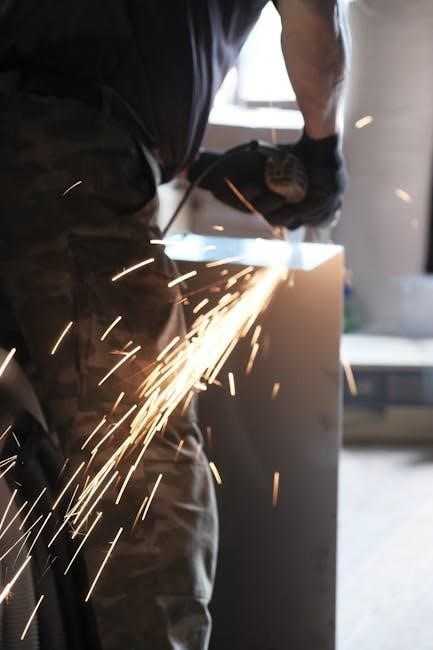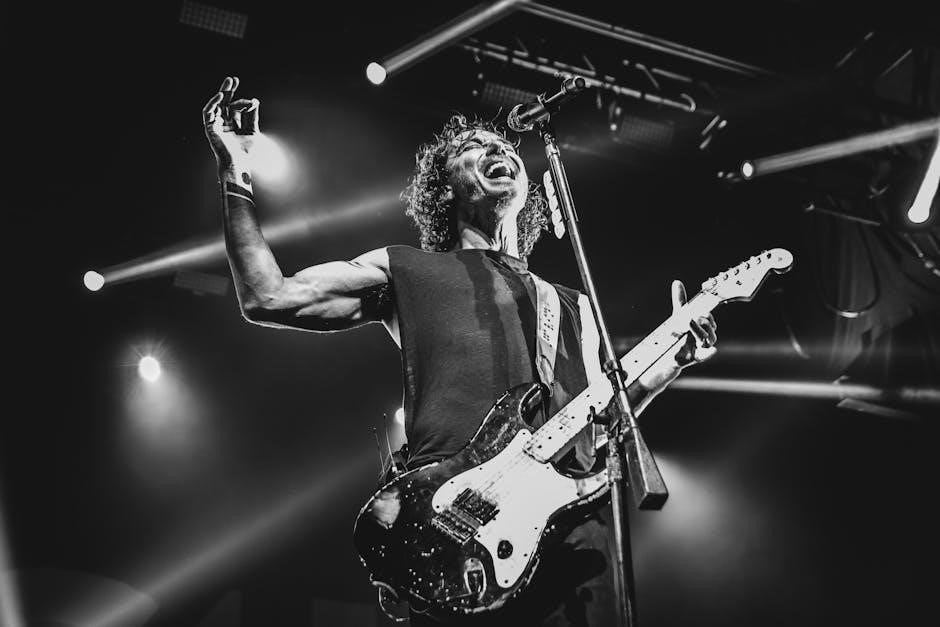Folding drones are portable, compact, and designed for convenience, offering easy storage and transport. Their collapsible arms make them ideal for travel and everyday use, combining innovation with practicality.
1.1 What is a Folding Drone?
A folding drone is a type of unmanned aerial vehicle (UAV) designed with collapsible arms, enabling compact storage and easy transport. Its lightweight and portable design makes it ideal for travel and recreational use. These drones often feature advanced technologies like HD cameras, app control, and one-handed operation. The folding mechanism allows the drone to be folded into a smaller size, reducing bulk and making it convenient to carry in bags or cases. This innovative design bridges the gap between performance and portability, appealing to both hobbyists and professionals seeking versatility in their aerial photography and exploration needs.
1.2 Benefits of Using a Folding Drone
Folding drones offer exceptional portability, making them easy to carry on trips or adventures. Their compact design allows for storage in small spaces, while maintaining high performance. These drones are ideal for travelers and professionals seeking lightweight, versatile equipment. The folding feature enhances safety during transport, reducing the risk of damage. Additionally, many folding drones come equipped with advanced features like HD cameras, app control, and intuitive flight modes, providing an enhanced user experience. Their combination of convenience, durability, and cutting-edge technology makes folding drones a popular choice for both recreational and professional use.
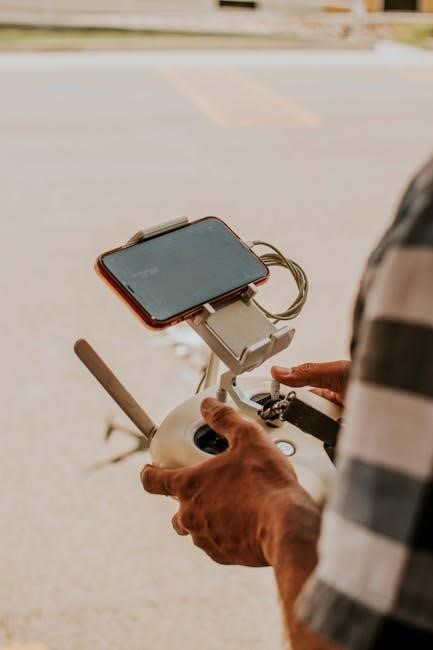
Safety Guidelines and Precautions
Always read the manual before first use, keep the drone away from crowded areas, and ensure it remains within your visual range during flight.
2.1 General Safety Precautions
Always read the user manual thoroughly before operating the drone. Ensure the device is used in open areas, away from people and obstacles. Keep the drone within your visual line of sight during flight. Avoid flying near airports, power lines, or sensitive locations. Never modify the drone or its components, as this can cause malfunctions. Check for damage before each use and ensure all parts are securely attached. Keep the drone out of reach of children and pets. Follow all local regulations and safety guidelines to ensure safe and responsible operation.
2.2 Legal and Regulatory Considerations
Before flying, familiarize yourself with local drone laws and regulations. Many regions require registration or licensing for drones above a certain weight. Ensure compliance with age restrictions, typically 14 years or older. Always maintain the drone in your visual line of sight and avoid restricted areas like airports or government buildings. Be aware of privacy laws and avoid capturing sensitive footage. Check for no-fly zones using official apps or websites like knowyourdrone.gov.au. Failure to comply may result in fines or legal consequences. Stay updated on regulatory changes to ensure lawful operation.
2.3 Pre-Flight Checks
Always perform thorough pre-flight checks to ensure safe and smooth operation. Verify the battery level and charge if necessary. Inspect propellers for damage or wear, replacing them if needed. Calibrate the drone on a flat surface and synchronize it with the remote control. Check for firmware updates and ensure all connections are secure. Avoid flying in poor weather or near obstacles. Consult the user manual for specific instructions and adhere to all safety guidelines. Proper preparation minimizes risks and enhances your flying experience. Remember, safety is a priority, so never skip these essential checks.

Unboxing and Assembly
Unbox and inspect all components, including the drone, remote control, battery, charger, propellers, and user manual. Carefully assemble the drone by attaching the propellers and ensuring all parts are securely fitted.
3.1 What’s in the Box?
3.1 What’s in the Box?
Your folding drone box includes the drone unit with foldable arms, a remote controller, a rechargeable battery, a USB charging cable, extra propellers, protective gear, and a user manual; Additionally, some models come with a mobile phone holder for attaching your smartphone, which is essential for using the drone’s app features. Ensure all items are accounted for and in good condition before assembly. The components are designed for easy setup and safe operation, providing everything needed to start your drone experience.
3.2 Assembling the Drone
Begin by unfolding the drone’s arms and ensuring they lock securely in place. Attach the propellers to each motor, tightening them firmly. Next, install the battery by sliding it into the designated compartment and securing it. Ensure the battery is fully charged and the drone is placed on a flat surface. Finally, attach the mobile phone holder to the remote controller, ensuring it is stable and can hold your device securely. Refer to the user manual for detailed diagrams and instructions to ensure proper assembly and safety. Proper assembly is crucial for optimal performance and safe operation.
3.3 Installing the Mobile Phone Holder
To install the mobile phone holder, align it with the remote controller’s USB port and gently slide it into place until it clicks. Ensure your phone fits securely within the holder, typically accommodating devices up to 5.5 inches. Adjust the clamp to hold your phone firmly, ensuring the screen faces forward. For tablets or larger devices, use the USB port on the remote controller but avoid using both Micro USB and USB ports simultaneously. This setup ensures stable video transmission and optimal control during flight. Always test the holder’s stability before flying to prevent any issues mid-flight.
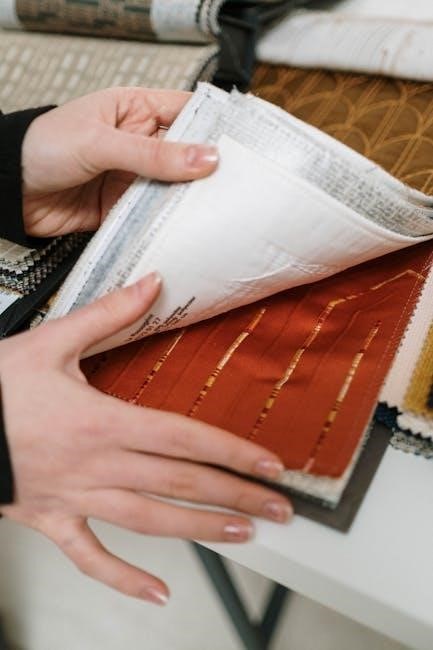
Preparing for the First Flight
Review the quick start guide, ensure the battery is fully charged, and synchronize the drone with the remote control. Calibrate the drone on a flat surface and test all functions to ensure a smooth and safe first flight experience.
4.1 Charging the Battery
To ensure a successful first flight, proper battery charging is essential. Use the provided USB cable to charge the battery, typically requiring 1-2 hours for a full charge. Always charge the battery in a safe, dry environment, away from flammable materials. Avoid overcharging, as it may damage the battery. Before use, inspect the battery for any damage or deformities. If damaged, do not use the battery. After charging, ensure the battery is securely installed in the drone. Refer to the user manual for specific charging times and guidelines. Proper charging ensures optimal performance and safety during flight.
4.2 Synchronizing the Drone with the Remote Control
To synchronize the drone with the remote control, start by placing the drone on a flat, stable surface. Power on the drone first, followed by the remote control. The drone and remote will automatically enter binding mode. Wait for the LED indicators on the drone and remote to flash, signaling a successful connection. Once synchronized, test the joysticks to ensure proper response. If pairing issues occur, restart both devices and repeat the process. Always synchronize in an open area, away from interference. Proper synchronization ensures smooth and responsive flight control. Refer to the manual for detailed pairing instructions if needed.
4.3 Calibrating the Drone
Calibrating your folding drone ensures accurate flight performance and stability. Place the drone on a flat, level surface and power it on. Using the remote control, locate the calibration option in the settings menu. Follow the on-screen instructions to complete the process. The drone will automatically adjust its sensors and gyroscopes. Calibration is essential before each flight, especially in new environments, to maintain precise control and balance. If the drone experiences instability, recalibrate immediately. Always ensure the area is free from magnetic interference during calibration for optimal results. Refer to the manual for detailed calibration steps if issues persist.
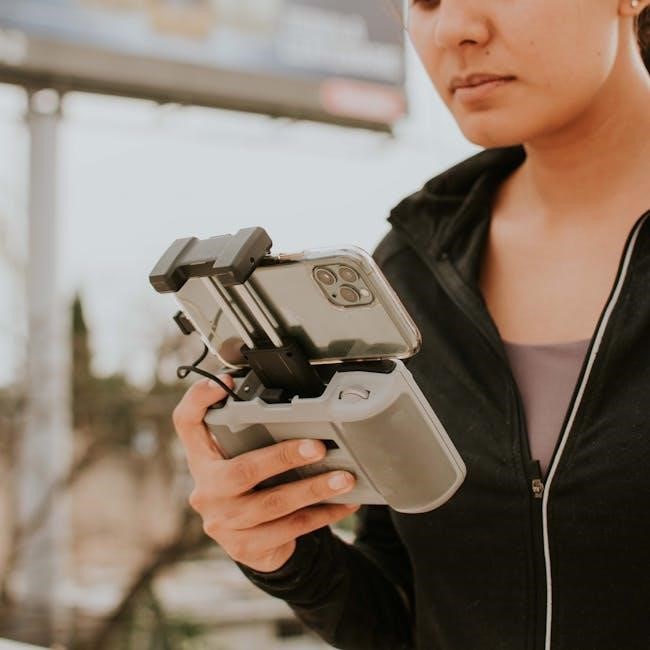
Folding and Unfolding the Drone
Folding drones feature a compact, portable design with collapsible arms. To fold, release the locking mechanism and tuck the arms securely. Unfolding reverses this process, ensuring stability for flight. Always ensure propellers are fully secured after unfolding to guarantee safe operation and optimal performance.
5.1 Step-by-Step Guide to Folding
To fold your drone, start by powering it off and removing the battery for safety. Release the locking mechanism on the arms by sliding the release tabs. Gently fold each arm toward the drone’s body until they click into place. Ensure all arms are securely locked to prevent accidental deployment. Check for any loose components and store the drone in a protective case to avoid damage during transport. Always verify that the arms are fully folded before moving the drone to maintain its compact design and portability.
5.2 Step-by-Step Guide to Unfolding
Begin by ensuring the drone is powered off and the battery is removed. Locate the release mechanisms on the folded arms and slide them to unlock. Gently pull each arm outward, aligning them with the drone’s body until they click into place. Repeat for all arms, ensuring proper alignment and stability. Check for any loose components and verify that all arms are securely locked. Once fully unfolded, insert the battery and power on the drone to confirm readiness. Always handle the arms with care to avoid damage and ensure proper functionality.
5.3 Tips for Safe Transportation
Always store the drone in its folded state to minimize bulk and prevent damage. Use a protective carrying case or pouch to shield the drone from scratches and impacts. Secure loose accessories like propellers and the remote control in separate compartments to avoid accidental damage. Ensure the battery is fully removed or securely inserted during transport to prevent unexpected power-ons. Avoid exposing the drone to extreme temperatures or moisture. Keep the drone away from children and pets during travel. Regularly inspect the drone and case for wear and tear to maintain safety and functionality. Safe transportation ensures your drone remains in optimal condition for its next flight.
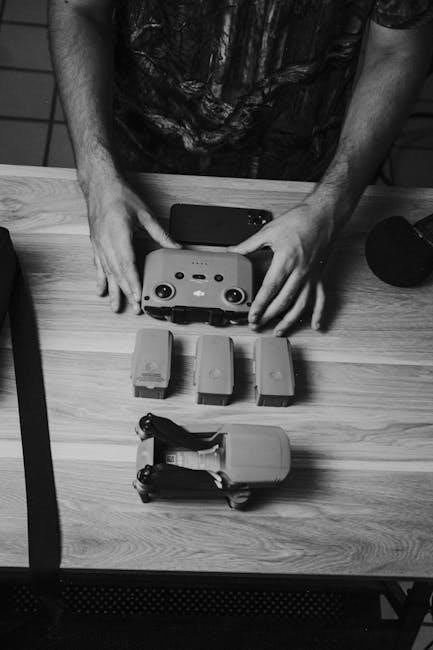
Flight Operations
Flight operations involve mastering basic controls for smooth maneuvering and exploring advanced features for enhanced functionality. Utilize the HD camera for capturing high-quality aerial footage effortlessly.
6.1 Basic Flight Controls
Mastering basic flight controls is essential for smooth and precise drone operation. The remote controller typically features two joysticks: the left stick controls throttle (up/down) and yaw (rotation), while the right stick manages pitch (forward/backward) and roll (left/right). Ensure a stable hover before transitioning to movement. Practice in an open area to avoid obstacles. Familiarize yourself with the drone’s responsiveness to joystick inputs. Always maintain visual line of sight and use the HD camera for real-time feedback. Proper control mastery ensures safe and enjoyable flights, allowing you to capture stunning aerial footage effortlessly.
6.2 Advanced Flight Features
Advanced flight features enhance your folding drone experience, offering precision and creativity. One-handed gravity mode allows intuitive control, while smart tracking follows subjects effortlessly. Enable altitude hold for stable hover, and use follow-me mode to capture dynamic footage. Headless mode simplifies navigation, and waypoint mapping lets you plot flight paths. Customizable settings optimize performance for varying conditions. These features, combined with real-time HD camera feedback, empower you to explore complex maneuvers and capture stunning aerial visuals. Practice in open spaces to master these capabilities and unlock your drone’s full potential.
6.3 Using the HD Camera
Your folding drone’s HD camera captures high-quality photos and videos, perfect for aerial photography and videography. Adjust settings like resolution and stabilization via the app for optimal results. Use the microSD card slot to expand storage. Ensure proper lighting conditions for clarity. Experiment with angles and modes to enhance creativity. Review footage through the app or transfer it to your device. Regularly clean the camera lens for clear imagery. This feature makes your drone versatile for both casual and professional use, offering stunning visuals every time. Always follow local regulations when recording.

Troubleshooting Common Issues
Identify and resolve common issues such as synchronization errors, battery life problems, or camera malfunctions. Consult the user manual or contact manufacturer support for detailed solutions and repairs.
7.1 Common Problems and Solutions
Common issues with folding drones include synchronization errors, battery life problems, and camera malfunctions. For synchronization issues, restart the drone and remote control, ensuring proper pairing. Battery life can be extended by avoiding overcharging and updating firmware. Camera malfunctions may require recalibrating settings or reinstalling the app. Propeller obstructions or imbalanced arms can cause unstable flight, so inspect and clean propellers regularly; For persistent issues, consult the user manual or contact manufacturer support for assistance. Regular software updates and proper maintenance can prevent many common problems and ensure optimal performance.
7.2 Maintenance and Repair Tips
Regular maintenance is crucial for extending the life of your folding drone. Clean the propellers and motors frequently to remove dirt and debris. Inspect the arms and hinges for damage after each use and lubricate moving parts to ensure smooth folding. Store the drone in a dry, cool place to prevent battery degradation. Avoid overcharging, as this can reduce battery lifespan. For repairs, use original replacement parts to maintain performance. Update the firmware regularly to fix bugs and improve functionality. If issues persist, refer to the user manual or contact the manufacturer for professional assistance. Proper care ensures optimal performance and safety.
Folding drones offer a perfect blend of portability, innovation, and enjoyment. By following this manual, users can ensure safe, responsible, and exciting flights, making every experience memorable.
8.1 Final Tips for Enjoying Your Folding Drone
Always ensure the battery is fully charged before flights and avoid over-discharging. Familiarize yourself with local regulations to fly responsibly. Practice in open spaces to master controls and explore advanced features like HD camera capture. Regularly inspect propellers and store the drone in a protective case. For optimal performance, update firmware and calibrate the drone periodically. Experiment with different flight modes to enhance your experience. Lastly, refer to the manual for troubleshooting and maintenance tips to extend your drone’s lifespan and ensure safe, enjoyable flights every time.

